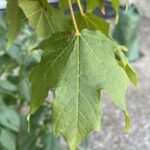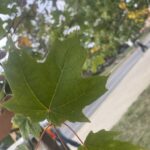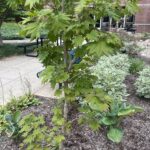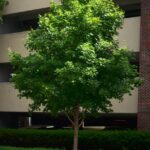Flowers:
Yellow (Spring; not ornamentally important)
Foliage:
Bronze (Emerging leaves); Green (Medium green summer foliage); Multi-Colored (Stunning yellow, orange, red, and purple to subdued red fall foliage)
Soil:
Well-drained moist loamy soil that is slightly acidic
Diagnostic Characteristics:
Opposite, trifoliate leaves are 2-5" long with nearly entire, acute leaflets. The middle leaflet is usually the largest. The leaflets are softly pubescent underneath. Flowers usually consist of 3 cymes together on drooping pedicels that are 0.75" long. The 0.5" diameter flowers occur in May as the leaves emerge. Densely pubescent samaras are 1-2" long with wings either being curved inward or at right angles. The stems are angled and prominently lenticelled.





